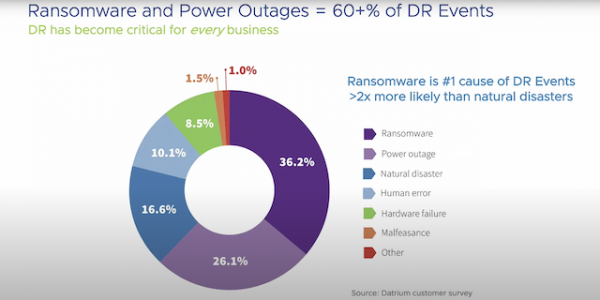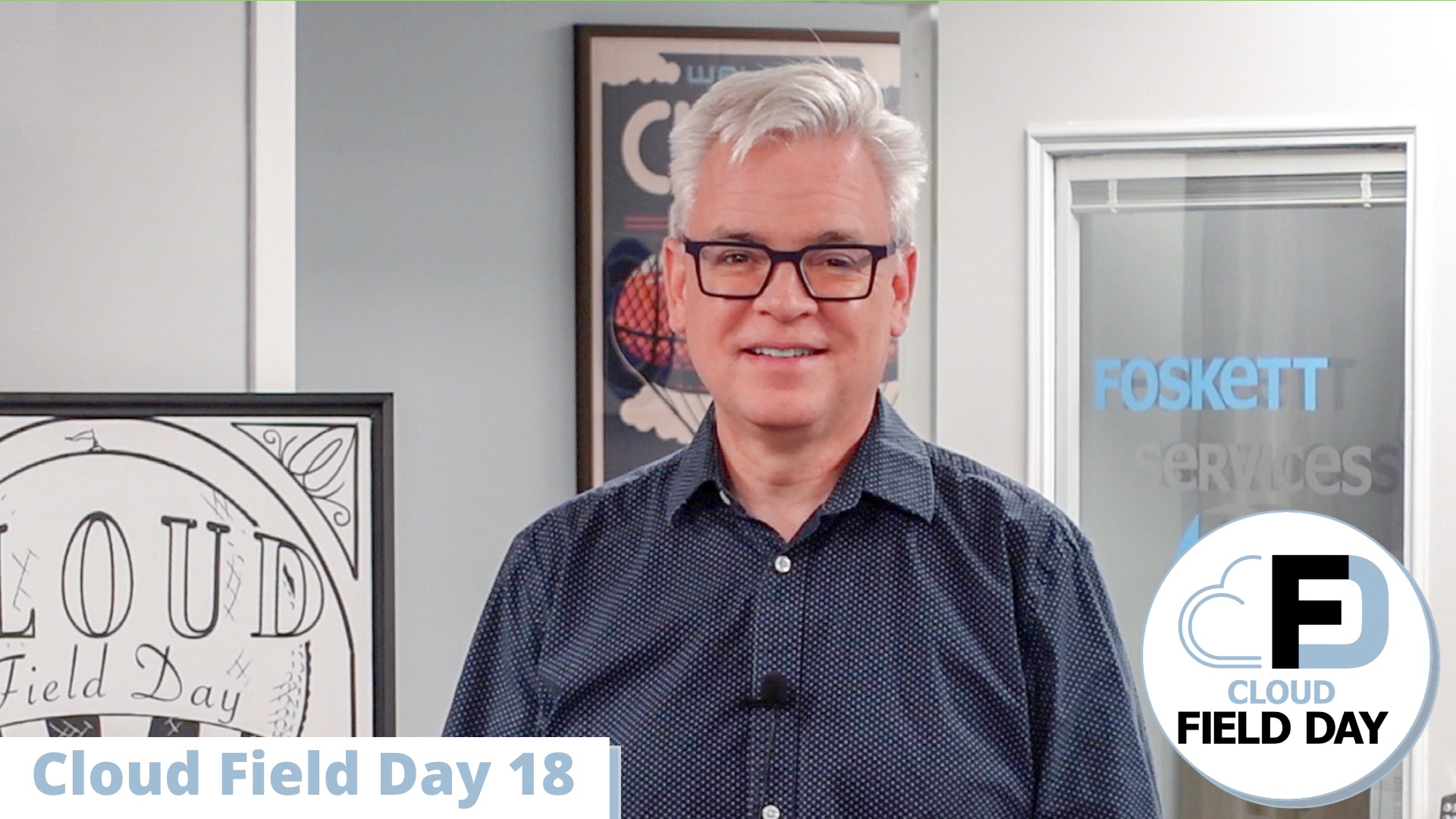Despite its importance to ensuring business continuity, disaster recovery often gets no love. Organizations frequently fail to test their DR plans because of complexity, time, the risk of introducing data integrity problems, and sometimes it is not even a priority.
VMware‘s Cloud Disaster Recovery-as-a-Service offering aims to solve these problems and more with orchestration and automation that enables fast recovery on low-cost cloud object storage.
VMware presented its solution at Tech Field Day 22.
When the Best Disaster Recovery Plans Go Untested
Disaster recovery often doesn’t garner the attention or resources worthy of its importance to an organization’s livelihood. Most organizations have disaster recovery plans. However, many never get around to testing their recovery plans, or if they do, they do so infrequently. Until a disaster arises.
451 Research found that only 17% of companies test DR implementations more than twice a year. Testing recovery plans can be disruptive and may introduce the risk of data getting out of sync. However, in a world where no industry is exempt from ransomware attacks, it’s never been more important to test those DR plans.
VMware’s Disaster Recovery Enables Fast-Recovery on VMware Cloud on AWS
At Tech Field Day 22, VMware spotlighted its Cloud Disaster Recovery software-as-a-service offering (DRaaS). Using Cloud-based services, VMware Cloud Disaster Recovery orchestrates and implements cloud-based DR using a software-defined datacenter on VMware Cloud on AWS for customers with on-premises vSphere.
This on-demand DRaaS solution from VMware is designed to be cost-effective, highly reliable, and easy-to-use. VMware Cloud Disaster Recovery can also enable fast recovery. Key differentiators of VMware’s solution include using low-cost block storage coupled with the ability to run workloads in a single solution.
Forgetting the Disaster Recovery’s Cost and RTO Trade-Off
At the heart of VMware’s DRaaS solution is its scale-out cloud file system purpose-built for disaster recovery. This file system’s design, coupled with cloud-based services and VMware Cloud on AWS, lets organizations forget the cost and recovery time objectives (RTOs) trade-off. Low cost and fast recovery are no longer mutually exclusive in the world of disaster recovery.
Let’s delve into the cloud file system that makes all of this possible. The distributed log structured file system (LFS) component transforms latency-generating random writes into sequential logs. By transferring sequential logs in place of a multitude of smaller blocks, cloud object storage performance speeds up considerably, while the cost of S3 API put and get calls decreases.
Another critical component of this file system is the snapstore metadata catalog for managing snapshots. Unlike with VMware snapshots, there is no chaining issue, and consolidations are never needed. Snapshots instead are immutable and scalable to millions of VM snapshots. Also, snapshots can be used for instant clones. Lastly, Distributed NFS and read cache with a global namespace makes a live mount of virtual machines possible for faster recovery and ease of testing.
However, a disaster recovery solution is only as good as the integrity of the recovered data. VMware’s Cloud Disaster Recovery solution considers data integrity its primary job. Data integrity is verified daily, and DR configuration tests run every 30 minutes to scope out potential problems. Additionally, immutable snapshots are hidden for greater protection of data integrity. A delta-based failback ensures only changed blocks are transferred back, minimizing any egress charges. Also, this failback reduces the risk of data drift from a failover.

Conclusion
In the past, implementing a disaster recovery plan meant procuring expensive hardware and leasing a site that might sit unused until you need them. However, the IT landscape has changed, and cloud can enable a faster recovery without spending money on rainy day infrastructure that may or may not get used. A DRaaS offering, though, has the potential to remove some of the operational complexity that often accompanies disaster recovery plans while simultaneously reducing some of the operational burdens that IT teams often face.
Born from VMware’s Datrium acquisition, VMware Cloud Disaster Recovery lets IT admins manage their disaster recovery environment with the same vSphere-centric tools that they use to manage day-to-day infrastructure. Automation and orchestration also relieve the operational burden of testing and maintaining disaster recovery plans.
Comprehensive and readily tested DR plans with the ability to fast recover minimize the risk and impact of data-loss generating incidents like ransomware attacks.
Finally, VMware Cloud Disaster Recovery can bring organizations a little peace of mind knowing their disaster recovery plans can be regularly tested, automated jobs regularly check for DR problems, and a highly available environment is readily available for recovery.
To learn more about the VMware Cloud Disaster Recovery solution, tune into its Tech Field Day 22 presentations.




